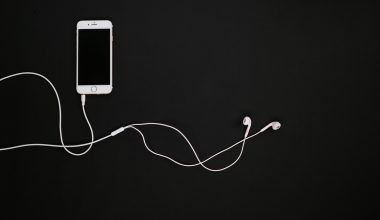Music is a universal language, and playing a musical instrument is one of the most fulfilling ways to express yourself. Whether you’re an aspiring musician or a seasoned professional, choosing the best music instrument can be a transformative journey. From soothing strings to powerful percussion, each instrument holds unique characteristics that cater to diverse tastes and skills. In this blog, we’ll explore the top musical instruments, factors to consider when choosing one, and expert tips for mastering your craft.
Why Learning a Musical Instrument Is Life-Changing
Music enriches our lives in countless ways. Playing an instrument enhances cognitive abilities, improves memory, and reduces stress. But it goes beyond personal development—it’s about connecting with others, exploring cultures, and creating something beautiful.
Some popular instruments like the guitar, piano, and drums are household names, but lesser-known options like the ukulele or the kalimba can also be rewarding. The best music instrument for you depends on your interests, budget, and goals. Let’s dive deeper into the different types of instruments to find your match.
Understanding Different Types of Musical Instruments
1. String Instruments
String instruments are popular for their versatility and emotional depth. They’re played by plucking, strumming, or bowing strings. Examples include:
- Guitar: The guitar is often considered the best music instrument for beginners. It’s portable, affordable, and perfect for multiple genres, from rock to classical.
- Violin: Known for its soulful tone, the violin is ideal for classical and orchestral music enthusiasts.
- Ukulele: A smaller, lighter cousin of the guitar, the ukulele is excellent for easy and fun strumming sessions.
Tips for Beginners: Start with a comfortable model and practice daily to strengthen your fingers and improve dexterity.
2. Percussion Instruments
Percussion instruments are the backbone of rhythm in music. They’re exciting, dynamic, and suitable for players who enjoy creating beats.
- Drum Kit: A full drum set is a favorite for rock, pop, and jazz lovers.
- Cajón: This portable drum box is perfect for acoustic performances.
- Tambourine: Lightweight and easy to learn, the tambourine is ideal for kids and beginners.
Choosing the Best Option: For children, smaller hand percussion like bongos is a great entry point.
3. Keyboard Instruments
Keyboards offer an excellent foundation in music theory. They are versatile, allowing players to explore melody and harmony simultaneously.
- Piano: Often referred to as the king of instruments, the piano is perfect for classical and contemporary styles.
- Digital Keyboard: A budget-friendly, portable alternative to the traditional piano.
- Organ: Ideal for church music and classical pieces, organs are timeless and elegant.
Learning Tip: Start with basic scales and simple tunes before advancing to more complex compositions.
4. Wind Instruments
Wind instruments produce sound through the flow of air, requiring control and technique.
- Flute: A lightweight, melodious instrument that suits classical and folk music.
- Clarinet: A versatile option found in jazz, classical, and marching bands.
- Saxophone: Famous for its smooth tones, the saxophone is a favorite in jazz and blues.
Beginner Advice: Proper breath control is crucial, so invest in lessons to build a solid foundation.
5. Brass Instruments
Known for their bold, vibrant sound, brass instruments are staples in orchestras and marching bands.
- Trumpet: This bright and lively instrument is relatively easy to learn.
- Trombone: Unique for its sliding mechanism, the trombone adds depth to music.
- French Horn: An elegant instrument perfect for classical music.
Tips for Success: Brass instruments require strong lip muscles, so regular practice is key.
6. Other Unique Instruments
If you’re looking for something unconventional, consider these options:
- Harmonica: Pocket-sized and easy to carry, the harmonica is perfect for blues and folk music.
- Kalimba: Known as the thumb piano, the kalimba produces calming tones.
- Bagpipes: A traditional instrument with a distinctive sound, popular in Scottish music.
How to Choose the Best Music Instrument for You
Selecting the best music instrument can be overwhelming. Here’s a step-by-step guide:
- Assess Your Interests: Choose an instrument that aligns with your favorite music genres.
- Consider Your Budget: Start with an affordable beginner model before investing in professional gear.
- Factor in Portability: If you travel frequently, opt for portable instruments like the ukulele or harmonica.
- Evaluate Your Space: Large instruments like pianos or drum kits require significant space.
- Try Before You Buy: Visit a music store to test different instruments and see what feels right.
Tips for Mastering Any Instrument
- Set Realistic Goals: Break your learning journey into manageable milestones.
- Practice Regularly: Dedicate at least 30 minutes a day to practice.
- Seek Guidance: Join classes or find a mentor for personalized advice.
- Record Your Progress: Listening to yourself helps identify areas for improvement.
- Experiment with Genres: Don’t limit yourself—explore different styles to enhance versatility.
Best Music Instruments for Beginners
For those just starting, some instruments are easier to learn than others:
- Recorder: Ideal for kids due to its simplicity.
- Keyboard: Provides a solid understanding of music theory.
- Ukulele: Fun, lightweight, and beginner-friendly.
- Drums: Great for rhythm lovers with lots of energy.
Advanced Instruments for Professionals
Experienced musicians may want to explore more challenging options:
- Cello: A string instrument known for its rich, deep tones.
- Oboe: A double-reed wind instrument for skilled players.
- Electric Guitar: Perfect for rock and metal enthusiasts.
Caring for Your Musical Instrument
Proper maintenance ensures longevity and optimal performance. Follow these tips:
- Clean Regularly: Use appropriate tools to keep your instrument free from dust and grime.
- Store Safely: Use cases or covers to protect against damage.
- Tune Frequently: Ensure your instrument stays in pitch for the best sound.
Conclusion
The journey to finding the best music instrument is as rewarding as playing it. Whether you’re drawn to the strings of a guitar, the beats of a drum, or the keys of a piano, each instrument offers a unique path to musical fulfillment. Remember, the best instrument is the one that resonates with your heart and inspires you to create.
So, what are you waiting for? Start your musical adventure today and discover the joy of playing the best music instrument that suits you. Happy playing!
Related Articles:
For further reading, explore these related articles:
- Easy-to-Learn Instruments | Beginner’s Guide to Music
- Guitar-Like Instruments – A Beginner-Friendly Guide
- Easiest Musical Instrument to Learn – Beginner’s Guide
For additional resources on music marketing and distribution, visit Deliver My Tune.






